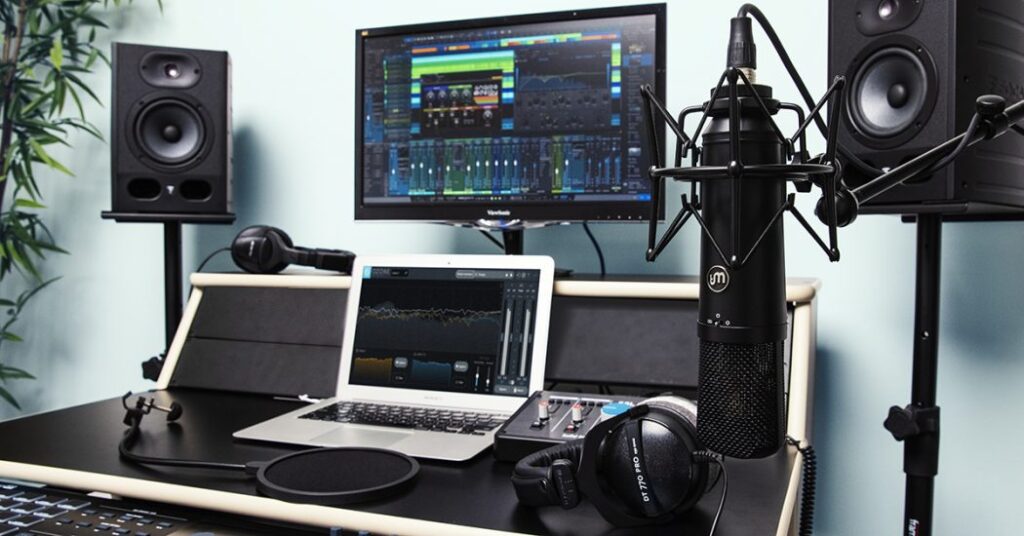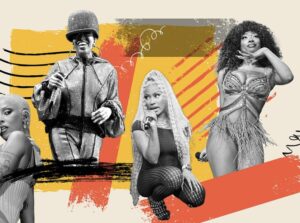The rise of influencer culture has significantly transformed the digital landscape, ushering in new opportunities for businesses, brands, and industries to capitalize on the rapidly growing creator economy. Among these industries, music licensing is experiencing a surge in demand as content creators seek high-quality, affordable music to enhance their videos, podcasts, and other creative projects. Platforms like Soundstripe are revolutionizing the way music is licensed, aiming to make the process simpler and more accessible. This trend is poised to fuel growth in the U.S. synchronization (synch) market, creating a win-win scenario for creators and musicians alike.
The Impression of Influencer Culture
Influencer culture has grown exponentially over the past decade, driven by the popularity of social media platforms like Instagram, YouTube, TikTok, and Twitch. Influencers—individuals with the ability to affect purchasing decisions due to their authority, knowledge, or relationship with their audience—play a central role in this ecosystem. They create content that spans various genres, including fashion, fitness, gaming, travel, and lifestyle, attracting millions of followers and generating significant revenue streams.
According to recent studies, the global influencer marketing industry is expected to reach $21.1 billion by 2025. This growth is fueled by brands investing in partnerships with creators to tap into their engaged audiences. However, the production value of influencer content has also risen, with creators competing to produce high-quality videos and posts that stand out in a saturated market. Music plays a critical role in this equation, setting the tone, enhancing emotional appeal, and maintaining viewer engagement.
The Demand for Music Licensing
As content creation becomes more professionalized, influencers and creators increasingly recognize the importance of legally licensed music. Unauthorized use of copyrighted tracks can lead to demonetization, legal disputes, and reputational harm. To avoid these risks, creators are turning to music licensing platforms that provide a diverse library of tracks while ensuring compliance with copyright laws.
This demand has led to the growth of music licensing platforms like Soundstripe, Artlist, and Epidemic Sound. These platforms offer subscription-based services, allowing creators to access royalty-free music for a flat fee. The simplicity and affordability of these models appeal to influencers who need quick, reliable solutions to elevate their content.
The Role of Platforms Like Soundstripe
Soundstripe, a leading music licensing platform, has positioned itself as a key player in this evolving landscape. Founded in 2016, the company aims to democratize access to music licensing by offering a user-friendly platform and a subscription-based pricing model. Creators can browse an extensive library of professionally produced tracks, filter by mood, genre, or instrument, and download music that fits their specific needs.
One of Soundstripe’s standout features is its focus on high-quality, exclusive music. Unlike stock music libraries, which often feature generic or overused tracks, Soundstripe collaborates with talented musicians and composers to curate unique content. This approach ensures that creators have access to fresh, engaging music that enhances their projects while avoiding the pitfalls of copyright infringement.
Additionally, Soundstripe offers creators unlimited licenses, meaning they can use the music across multiple platforms and projects without incurring additional fees. This flexibility is particularly valuable for influencers who produce content at scale, such as daily vlogs, tutorials, or branded campaigns.
The Growth Potential of the U.S. Synch Market
The synch market, which refers to the licensing of music for use in visual media, has become one of the most lucrative segments of the music industry. According to the Recording Industry Association of America (RIAA), synch revenue in the U.S. grew by 24.8% in 2022, reaching $580 million. This growth is attributed to the increasing demand for licensed music in digital content, advertisements, and streaming platforms.
Influencer culture is a driving force behind this trend. As creators produce more videos for platforms like YouTube, TikTok, and Instagram, the need for licensed music continues to rise. For instance, TikTok videos often rely on catchy, recognizable tracks to spark viral trends, while YouTube creators require background music for tutorials, reviews, and storytelling.
Moreover, the growing popularity of branded content—where influencers collaborate with companies to promote products or services—has further amplified the need for licensed music. Brands are investing heavily in influencer partnerships, and high-quality music is essential for creating polished, professional campaigns that resonate with audiences.
Challenges and Opportunities for Music Licensing Platforms
While the rise of influencer culture presents significant opportunities for music licensing platforms, it also comes with challenges. One of the primary hurdles is competition. With numerous platforms vying for market share, differentiation is critical. Platforms like Soundstripe must continue to innovate, offering unique features and expanding their music libraries to stay ahead.
Another challenge is balancing affordability with fair compensation for musicians. Subscription-based models provide cost-effective solutions for creators, but ensuring that artists receive equitable royalties remains a priority. Soundstripe addresses this issue by adopting a revenue-sharing model, ensuring that musicians earn a fair share of the platform’s revenue.
The increasing diversity of content creators also presents an opportunity for music licensing platforms to cater to niche markets. For example, gaming content creators may require tracks with an epic or cinematic vibe, while lifestyle influencers might prefer mellow acoustic tunes. By curating specialized playlists and offering tailored recommendations, platforms can better serve the unique needs of their users.
The Future of Music Licensing in the Creator Economy
As influencer culture continues to evolve, the demand for licensed music is expected to grow exponentially. Music licensing platforms like Soundstripe are well-positioned to capitalize on this trend by offering streamlined, affordable solutions that cater to the needs of modern creators.
Looking ahead, technological advancements such as artificial intelligence (AI) and machine learning could further enhance the music licensing experience. For instance, AI-powered algorithms could analyze a creator’s content and suggest music tracks that align with the mood, pacing, and style of their videos. This level of personalization would save creators time while ensuring that their content remains engaging and cohesive.
Another potential development is the integration of music licensing platforms with popular video editing software and social media platforms. By enabling seamless access to licensed music within these tools, platforms like Soundstripe could make the licensing process even more convenient for creators.
Finally, as the creator economy matures, the collaboration between music licensing platforms and influencers could extend beyond licensing. For instance, platforms might partner with top creators to promote exclusive music tracks, leveraging influencers’ reach to drive awareness and engagement.
Final Thoughts
The rise of influencer culture has created a thriving ecosystem that presents significant opportunities for music licensing platforms. As content creators seek high-quality, legally licensed music to enhance their projects, platforms like Soundstripe are stepping in to simplify the process and meet the growing demand. This trend is not only fueling the growth of the U.S. synch market but also empowering musicians to earn revenue from their work.
By focusing on innovation, personalization, and collaboration, music licensing platforms can continue to thrive in the creator economy, playing a pivotal role in shaping the future of digital content. The intersection of music and influencer culture represents a dynamic and evolving landscape, offering endless possibilities for creators, musicians, and platforms alike.
No comments yet.







